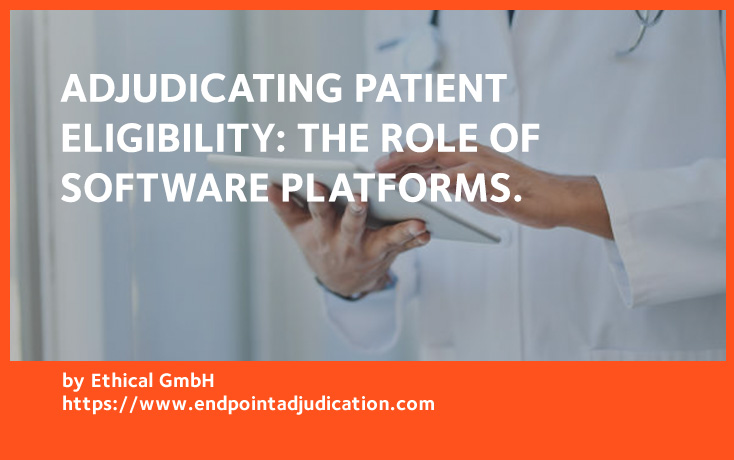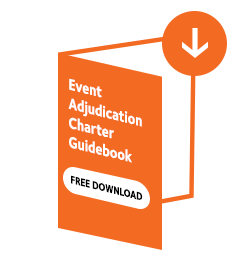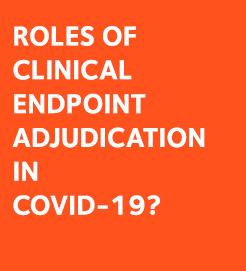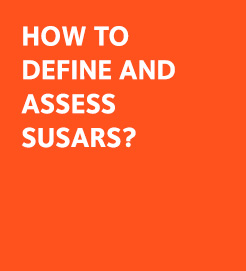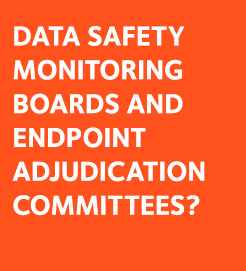Clinical Adjudication was initially developed and most widely used for the review and adjudication of clinical endpoints and adverse events. However, there are other fields where adjudication may prove useful or even be required by health authorities; patient eligibility is one of them. Enrollment of patients in complex trials with composite inclusion/exclusion criteria is not always easy for investigational sites and the risk of enrolling the wrong population is higher. Using a cloud-based software platform can help perform such adjudication in a seamless way and allow quicker and more accurate enrollment.
The evolving landscape of clinical trials
The landscape of drug development has evolved during the past decades. The most common diseases which were the focus in the beginning of the modern era have been largely addressed and a series of blockbuster drugs have provided better health, lower mortality and better quality of life for the population at large. Today, the research focusses on rare diseases and complex pathologies that have eluded efficient treatment for decades. In many cases, new drugs target an improved efficacy, safety or dosage that would allow them to replace the first generation of medicines. These new drugs need to show that they are superior to the existing treatments and this requires either larger studies (as the difference to be proven is not as marked as versus a placebo treatment) or more complex criteria to define the study population. According to a 2019 report from IQVIA1, 49% of New Active Substances (NAS) developed are targeting orphan diseases, 27% are biologics and 34% are first-in-class molecules. Thirty two percent (32%) of the running trials included more than 1000 subjects.
“Medically complex patient populations may require tailored criteria”2
Establishing inclusion and exclusion criteria for study participants is a standard, required practice when designing high-quality research protocols. It is very important that [sponsors] not only define the appropriate inclusion and exclusion criteria when designing a study but also evaluate how those decisions will impact the external validity of the results of the study3. While broader criteria give the ability to generalize the results to the broader population of patients who will ultimately use the drug, it may be necessary to set very precise conditions in order to demonstrate superiority to other existing treatments or to target a rare disease with symptoms that resemble more common conditions and can lead to confusion of diagnosis.
Many Inclusion or Exclusion criteria such as age, BMI or blood tests are based on numeric values and verified programmatically but others are based on clinical judgment, depend on diagnostic techniques or involve complex calculations and combinations of various elements that can be interpreted differently by different individuals. Finally, the growing importance of medical imaging in disease diagnosis has introduced another factor of subjectivity due to the interpretation of medical images.
The FDA retrospective review
An FDA review of eligibility criteria across NDA/BLA4 revealed that eligibility criteria are not always objective and that they are evaluated in a different way in different circumstances. In addition, it is not always possible to know how this evaluation was done.
- 82% of clinical trials in [this] pilot study had a renal or liver based exclusion.
○ The majority were based on a laboratory threshold. - ≈ 80% of clinical trials allowed investigators to use their discretion in excluding subjects.
○ No evidence if, or how often, used
○ NDAs had a higher percentage of renal exclusions compared to BLAs.
Why adjudication matters
Rare and complex pathologies tend to be under-diagnosed in the real world and suitable patients for the assessment of new drugs are difficult to find. It is therefore important in late phase clinical trials to involve not only highly specialized centers but also primary and secondary care physicians who are more likely to encounter these patients in real life conditions. On the other hand, these principal investigators (PI) may be less familiar with complex and specific eligibility criteria and are likely to misinterpret or even refuse to participate thus reducing the number of available investigational centers and making recruitment very challenging. The solution is to offer adjudication of these eligibility criteria by a panel of independent experts. This reduces the burden of assessment for PIs and increases the precision of the trial.
Why use a software platform
Cloud-based software platforms such as eAdjudication® have been developed specifically to allow seamless review and assessment of clinical trials results by external parties in a compliant way. Data, documents, reports, images and other information can easily be uploaded by the sites, reviewed for quality and completeness and, if needed, anonymized by the platform administrators and assessed by experts wherever these may be located, all in a matter of hours. Enrollment of appropriate patients is greatly facilitated and study timelines are improved.
DOWNLOAD NOW THE FREE ENDPOINT ADJUDICATION HANDBOOK
The Complete Manual / Reference Book (34 pages) with all the topics related to the Independent Endpoint Adjudication Committees Management
__________________________________________________
1The Changing Landscape of Research and Development. Innovation, Drivers of Change, and Evolution of Clinical Trial Productivity. IQVIA Institute Report. Apr 23, 2019
2Rationale for Inclusion and Exclusion Criteria. Deidra C. Crews, MD, ScM Associate Professor of Medicine, Division of Nephrology
3Inclusion and exclusion criteria in research studies: definitions and why they matter. Cecilia Maria Patino and Juliana Carvalho Ferreira. J Bras Pneumol. 2018 Mar-Apr; 44(2): 84.
4Review of Eligibility Criteria from a Sample of Approved Drugs and Biologics. Kaveeta Vasisht M.D., Pharm.D. Office of Medical Policy CDER/FDA. April 16, 2018



